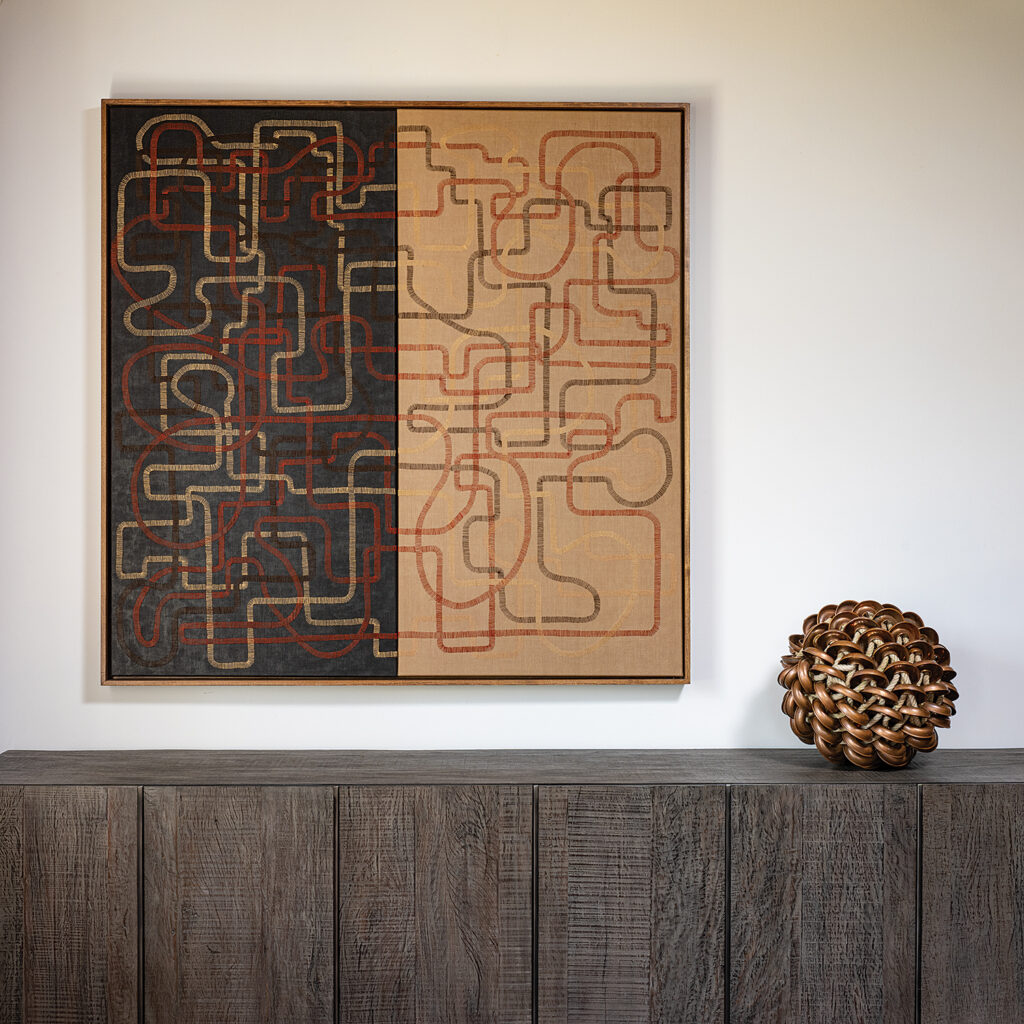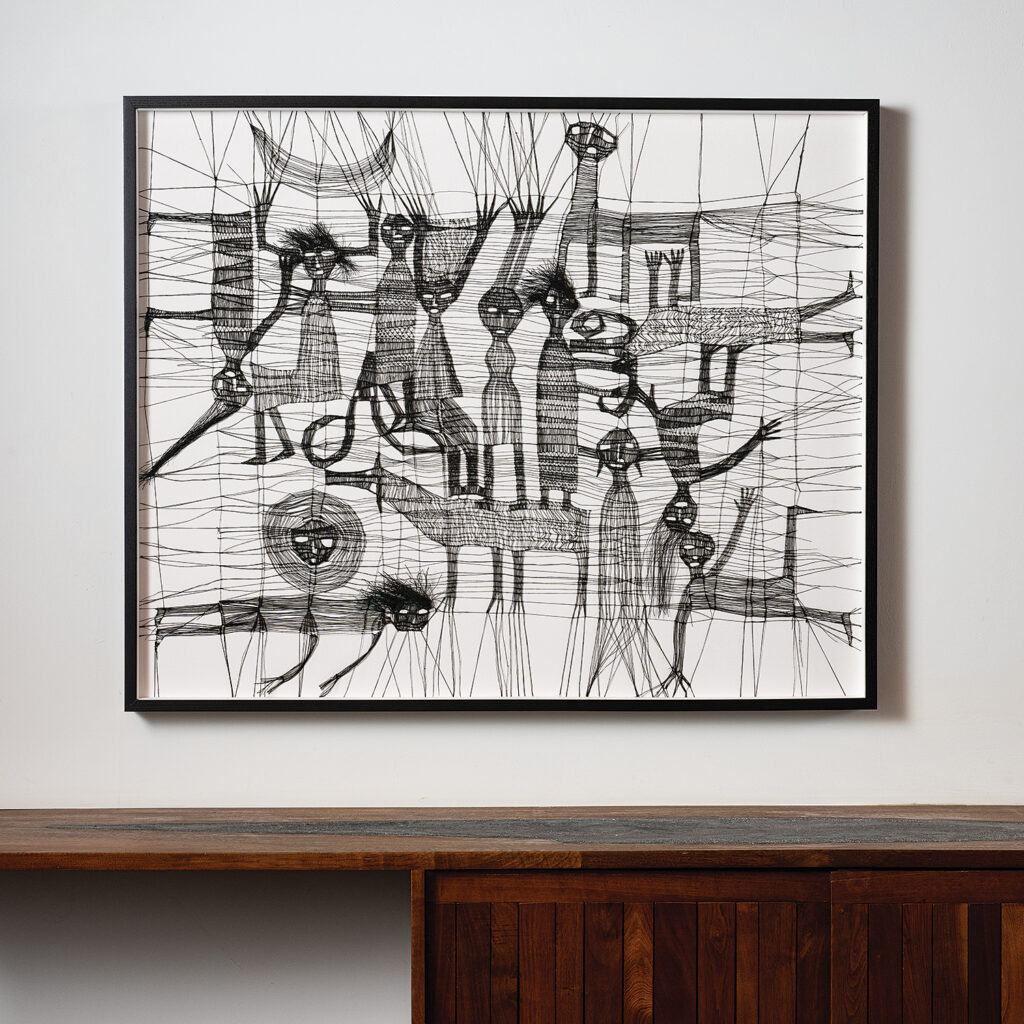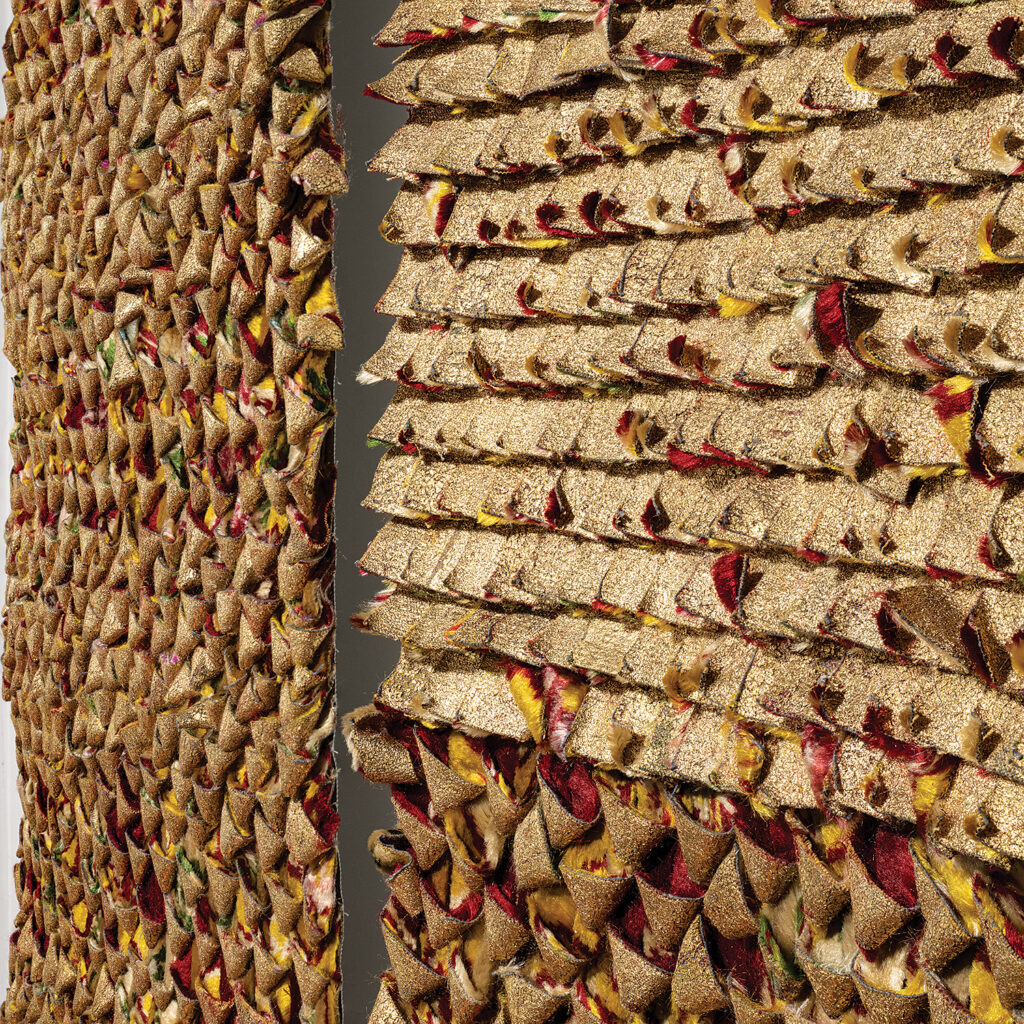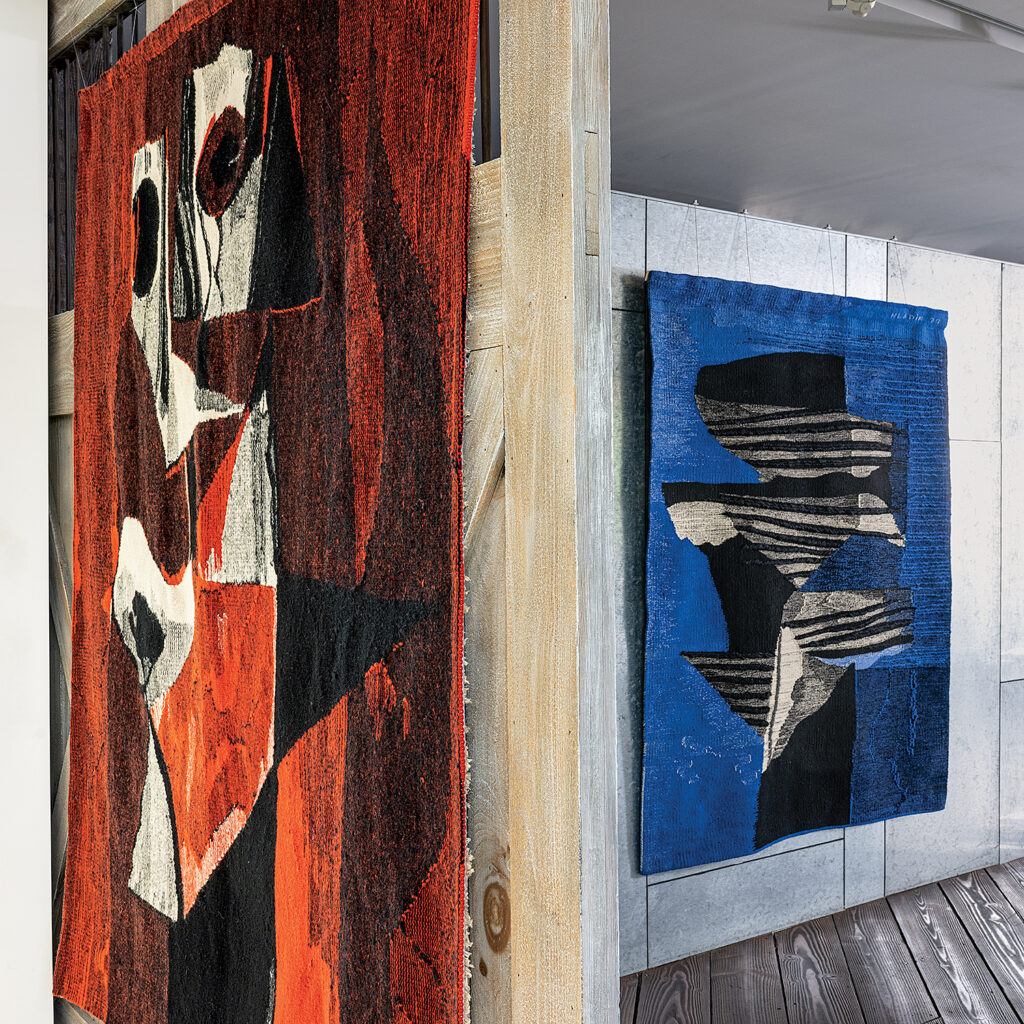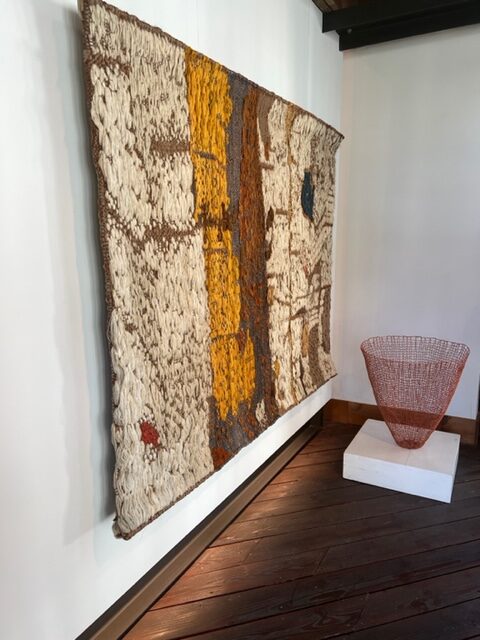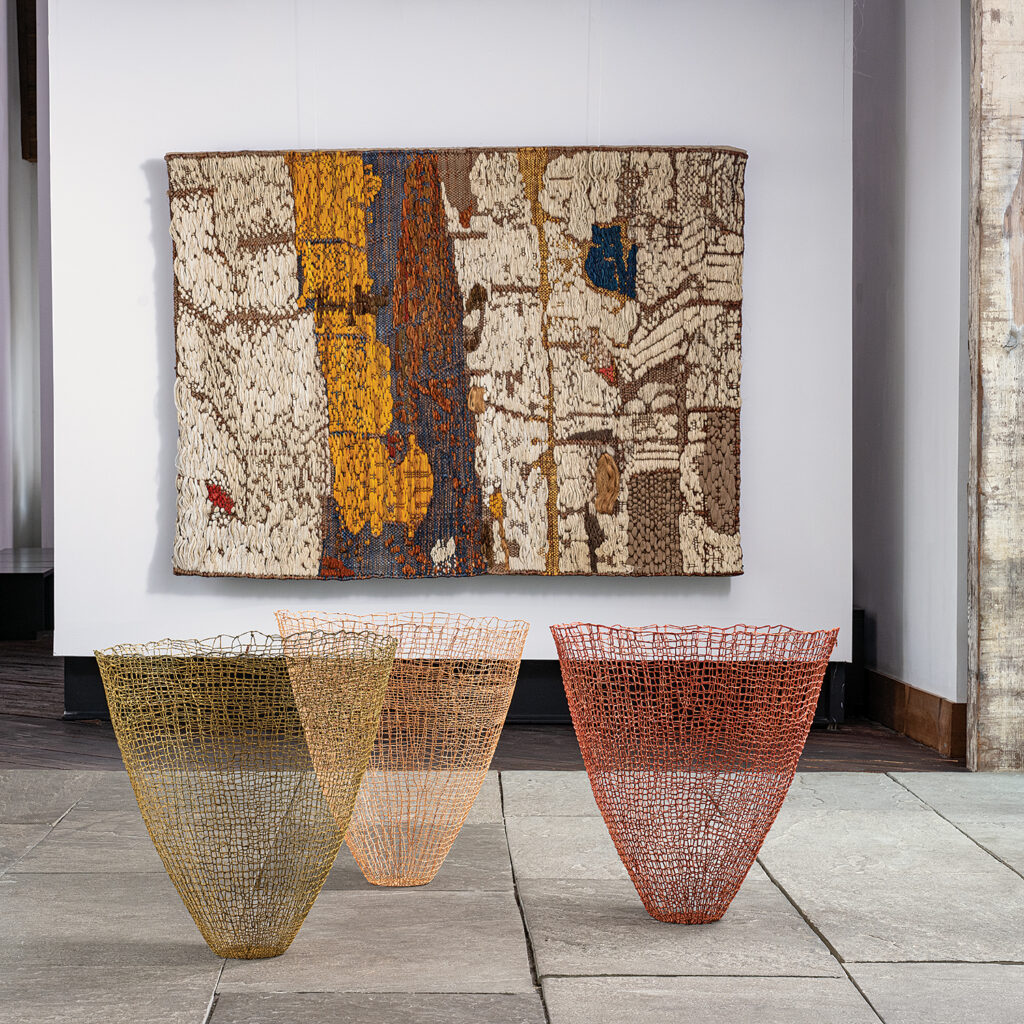
Rhonda Brown and Tom Grotta are unique figures in the world of decorative arts. Operating their gallery “browngrotta arts” from their beautiful farmhouse in Wilton, Connecticut, the husband-wife team have emerged as world experts in contemporary fiber art. In fact, their gallery is the only one of its kind—representing hundreds of fiber artists from across the globe and is only opened to visitors twice a year for two thematic exhibitions. The current show, entitled “Allies for Art: Work from NATO-Related Countries” presents works by artists who have been influenced by current and past European politics. The featured artists weave stories of fear, struggle, interrogation, and refugees concerned about an uncertain future due to climate change and economic insecurity — all in fiber.
What is fiber art? Traditionally, it was defined as works of art where natural or synthetic fibers such as cotton, linen, yarn, felt, hemp, string, ribbon, wool, silk, acrylics, and crayon are used; however, according to the mission statement at browngrotta arts, it is defined as art made not only from the fibers, but also as techniques related to fibers such as weaving. Therefore, the objects at the gallery are crafted using a wide range of materials: wicker, wood, metal, plastic laminate, paper, horsehair—as long as the process represents those utilized in fiber.
Since opening their gallery in the 80s, Brown and Grotta have worked as a team, acting as both curators and writers and participating in all of the research. He does the photography, she does the marketing, and together they produce scholarly catalogues for all of the shows. The roster of artists is impressive, and when the work is placed at their expanded farmhouse, it shines through the rustic beams, old oak floors, and the plain, minimal interiors. The house originated as a 19th century barn in Wilton, a town known for having the largest number of historic houses in the state of Connecticut. The duo expanded it to include 3,500 square feet of combined living-gallery space, surrounded by the beautiful and raw New England landscape. The leaves start to turn and the legendary foliage seen through the windows adds to the already glorious works of art.
The exhibition catalog features an essay by Kate Bonansinga in which she contextualizes the works of art with the particular political landscape that brought each one to life. From communist Poland, to Romania under Nicolae Ceausescu, to the Iraq War; world events that inspired the represented artists to craft exquisite pieces of art. This Sunday is the last day to celebrate this bi-annual exhibition. Make an appointment by visiting the website so you can enjoy the New England autumn at its finest. All images courtesy browngrotta arts; photography: Tom Grotta.
‘
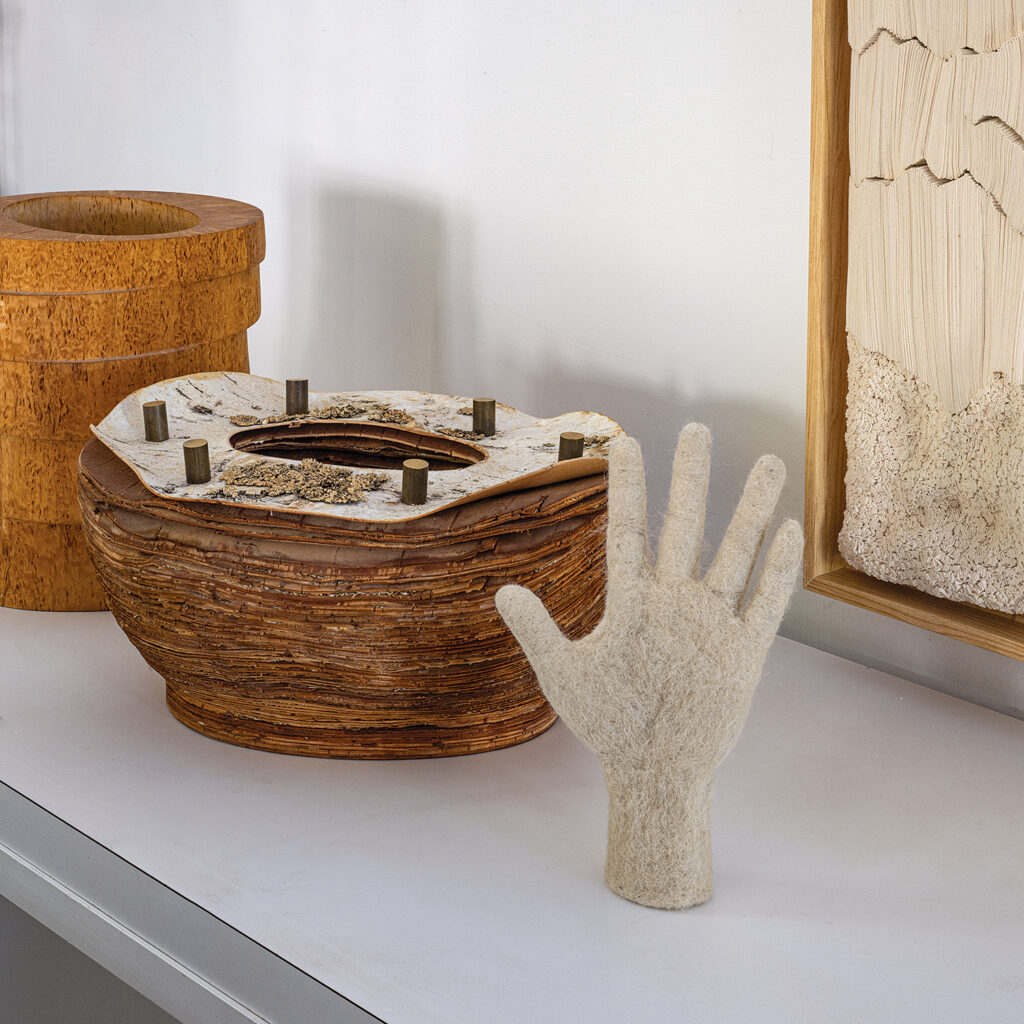
17ak Anda Klančič, Human Presence, 2019; 40sp Simone Pheulpin, Ondes, 2016. Photo by Tom Grotta.

